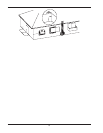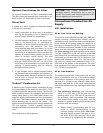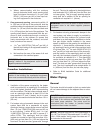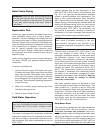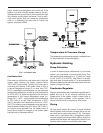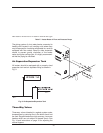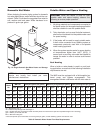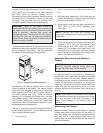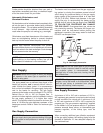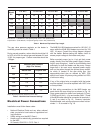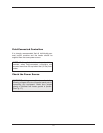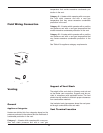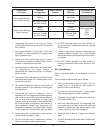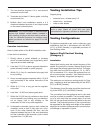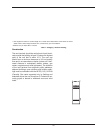
18
Pool/Spa Water Chemistry
Chemical imbalance can cause severe damage to
your heater and associated equipment. Maintain your
water chemistry according to the chart below. If the
mineral content and dissolved solids in the water
become too high, scale forms inside the heat exchang-
er tubes, reducing heater efficiency and damaging the
heater. If the pH drops below 7.2, this will cause cor-
rosion of the heat exchanger and severely damage the
heater. Heat exchanger damage resulting from chem-
ical imbalance is not covered by the warranty.
For your health and the protection of your pool equip-
ment, it is essential that your water be chemically
balanced. The following levels must be used as a
guide for balanced water.
Occasional chemical shock dosing of the pool or spa
should not damage the heater providing the water is
balanced.
Automatic chemical dosing devices and salt chlorina-
tors are usually more efficient in heater water, unless
controlled, they can lead to excessive chlorine level
which can damage your heater.
NOTE: Chemical imbalance can cause severe
damage to your heater and associated equipment.
Fig. 14: “H” Bypass Setting
NOTE: There are 2 separate drains on the MVB
that must BOTH be drained to protect the heat
exchanger. These are both accessible by removing
the lower front door from the heater. Drain any
piping of all water that may experience below-
freezing temperatures.
Recommended Level(s) Fiberglass Pools Fiberglass Spas
Other Pool and Spa
Types
Water Temperature 68-88°F (20-31°C) 89-104°F (31-40°C) 68-104°F (20-40°C)
pH 7.3-7.4 7.3-7.4 7.6-7.8
Total Alkalinity (ppm) 120-150 120-150 80-120
Calcium Hardness (ppm) 200-300 150-200 200-400
Salt (ppm) 6000 Maximum 6000 Maximum 6000 Maximum
Free Chlorine (ppm)* 2-3 2-3 2-3
Total Dissolved Solids
(ppm)
3000 Maximum 3000 Maximum 3000 Maximum
*Free Chlorine MUST NOT EXCEED 5 ppm!
Table H: Water Chemistry
CAUTION: Corrosive water voids all warranties.



